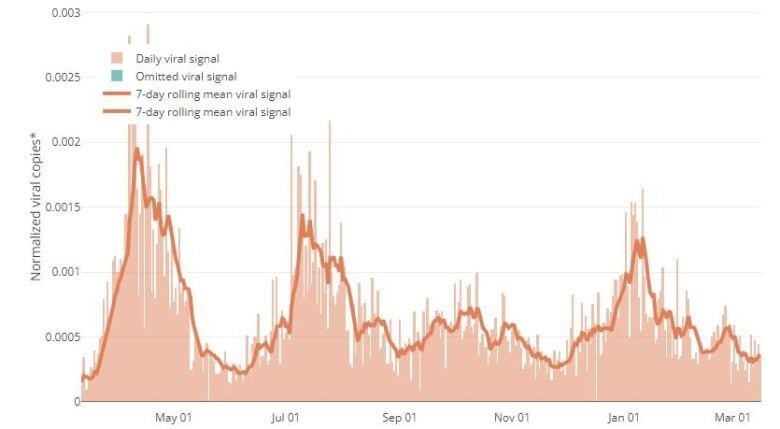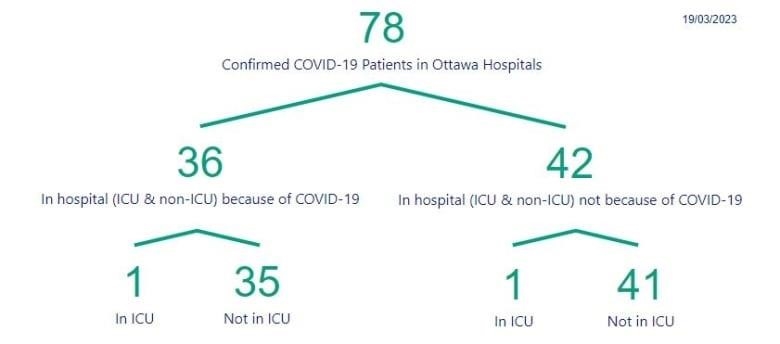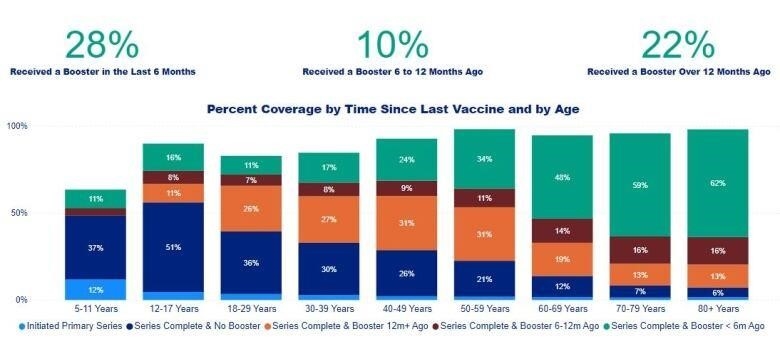
One more person in Ottawa has died from COVID
Recent developments:
- After reaching levels not seen since January, some of Ottawa’s COVID-19 indicators are starting to go down.
- In Ottawa, one more person with COVID has passed away.
The latest 
After a few weeks of staying the same, some of Ottawa’s COVID-19 trends went up to levels not seen since January, but they are now starting to go back down.
Ottawa Public Health (OPH) says that COVID-19 indicators have been stable at moderate to high levels for most of 2023.
Experts say that people should wear masks inside and, in Ontario, for a few days after having COVID symptoms. People who are weak can also be protected by staying home when they are sick and getting their COVID vaccines on time.
Levels of respiratory viruses that aren’t COVID tend to be low or change with the seasons.
Wastewater
The research team’s data shows that the average level of coronavirus in wastewater is stable after a slow drop at the beginning of the month.
The latest information comes from March 16. OPH thinks this is a high level.

Hospitals
The number of COVID-19 patients in local hospitals drops slightly, from 26 to 24. This is about the same number as in the second half of 2022 and the beginning of 2023.
Three people are in critical care.
A separate count of patients who tested positive for COVID after being admitted for other reasons, those who were admitted for lingering COVID complications, and those who were transferred from other health units is about the same as in January, but a little lower than last week.

Tests, outbreaks and deaths
This week, the number of active COVID outbreaks in Ottawa went up after dropping earlier this month. OPH thinks that the number is high.
Since the middle of February, the city’s COVID-19 test positivity rate has stayed between 11% and 14%, which is what OPH calls “moderate.”
Since Friday, the OPH has heard about 122 more COVID cases and the death of one person with COVID.
Vaccines
28 percent of Ottawans age 5 and up have had a COVID-19 vaccine dose in the last six months, which is what is usually recommended. The rates are higher for older age groups.

That translates to about 750,000 people in that age range without the recommended vaccine protection.It does not factor in immunity from getting COVID.
As of the most recent weekly update, 85% of Ottawa residents had at least one COVID vaccine dose, 82% had at least two doses, 56% had at least three doses, and 31% had at least four doses.
Across the regio
Spread
In the Kingston area, the average levels of coronavirus in wastewater are stable. They are out of date or not available anywhere else but Ottawa.
The COVID risk level in the Eastern Ontario Health Unit (EOHU) remains moderate.
Hospitalizations and deaths
Communities outside of Ottawa in eastern Ontario have reported about 10 COVID-19 hospitalizations, with five patients in intensive care.
Hastings Prince Edward (HPE) Public Health is not included in this regional count because it uses a different way to count. The number of hospitalizations in the area is stable.
There are only 59 COVID hospital patients in Western Quebec, which is the lowest number since July 2022. Two of them are in the hospital’s intensive care unit.
Vaccines
The Kingston area’s health unit says that 28% of people age 5 and up have gotten a COVID vaccine in the last six months. It’s 25% off in HPE and not available anywhere else.
The province says that between 79 and 90% of residents age 5 and up in eastern Ontario have had at least two doses of the COVID-19 vaccine and between 52 and 65% of those residents have had at least three doses.
